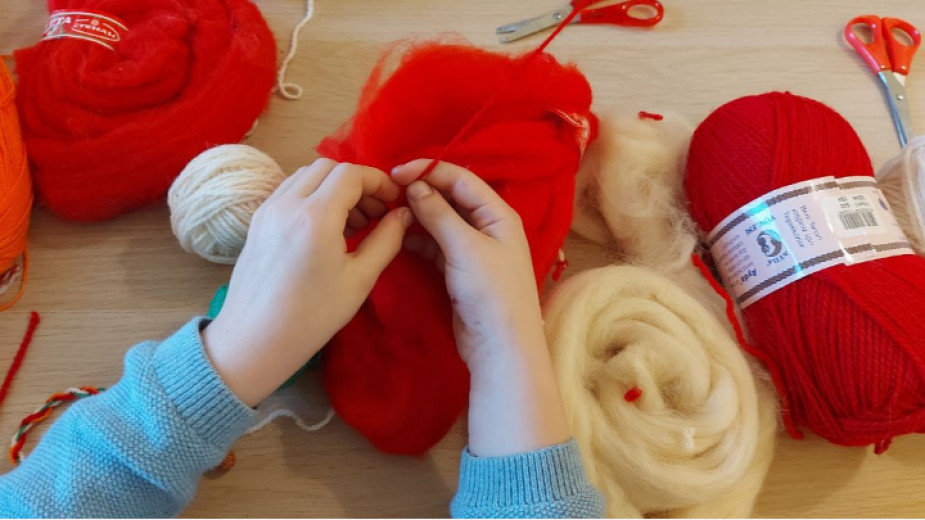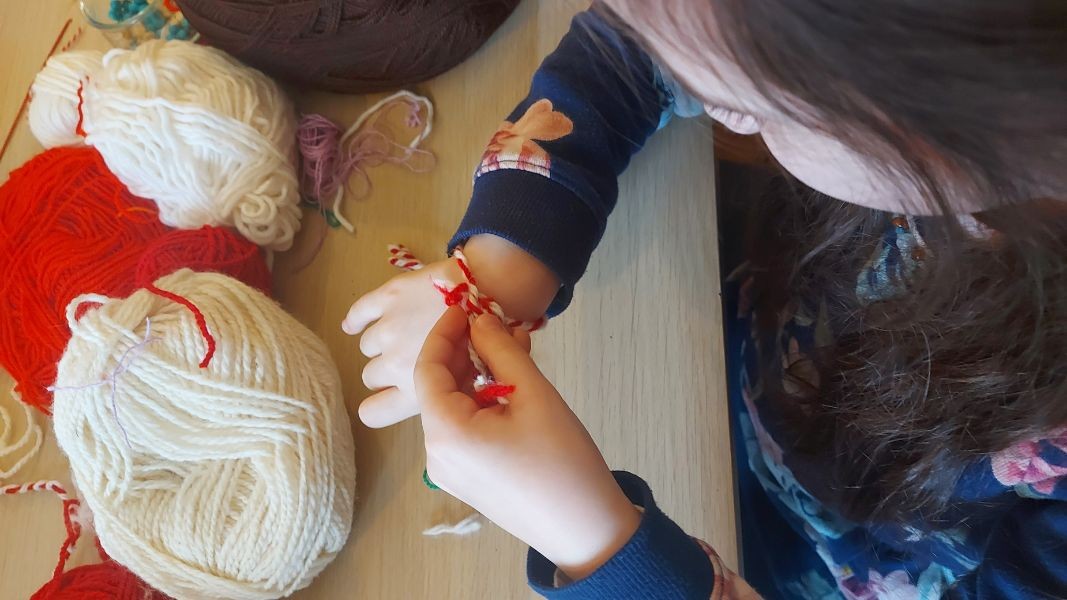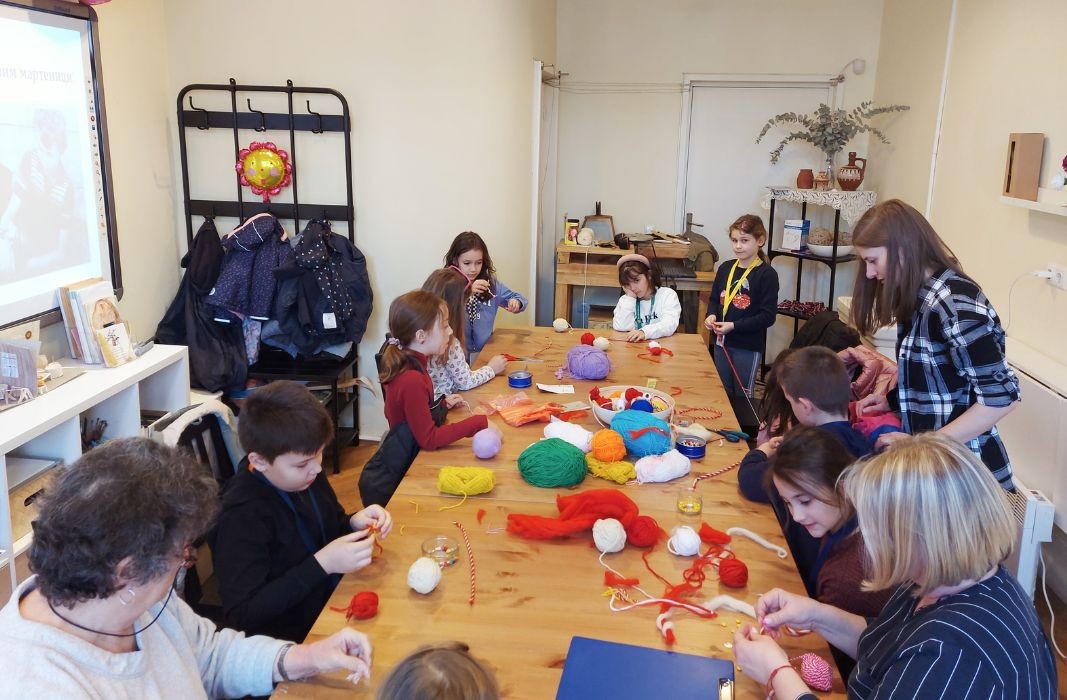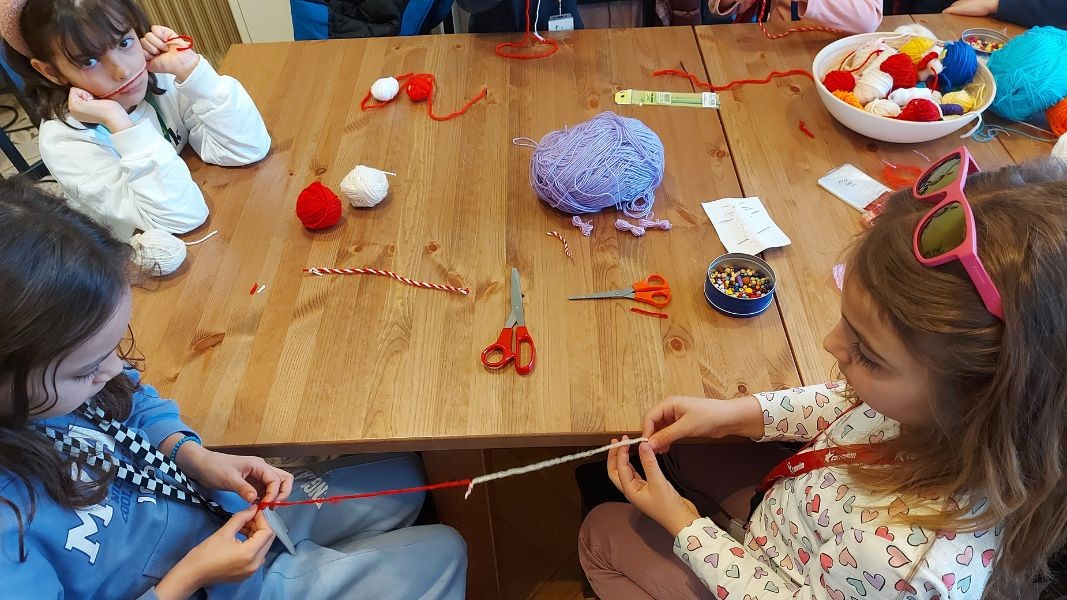 4
4
Martenitsas are one of the symbols of Bulgaria – regarded as the harbinger of spring and the end of darkness. Every year, on 1 March, Bulgarians, wherever they may be in the world, give friends and family the red-and-white tassels, as a token of health and prosperity. This ancient tradition has, for centuries, been handed down from one generation to the next, bringing joy and brightening up the first day of March. There is a popular belief that if 1 March is sunny and warm, then the summer will be rainy, if there is thunder – the harvest will be bountiful.
There are many legends about how the tradition of martenitsas came into being in our lands, but no one really knows where and when the first martenitsa was worn. However, Bulgarian folklore in all parts of the country attaches enormous importance to martenitsas – as a magical amulet that will ward off all kinds of evil – such as the forces of nature and the wild beasts lurking everywhere. In our day, martenitsas are regarded as “a guarantee of health and a transition to the new beginning ushered in by spring,” says Dr. Iglika Mishkova from the Bulgarian Academy of Sciences’ Institute of Ethnology and Folklore Studies:
“Back in the times of traditional society, martenitsas, unlike now, used to be made by the oldest woman of the household. By the woman who has given life the most, the woman with the most experience in life. To make martenitsas, people would pick the scraps of wool sheep left on the shrubs in the fields. The sheep were never sheared for wool for martenitsas, the wool used for making them was the wool caught in bushes where it had spent time under the stars, absorbing the magical powers of all the herbs growing in the fields, and part of this wool was dyed red, the other was left white. Traditionally, the old woman who made the martenitsas wore her best clothes, and she was not supposed to come in contact with fire before starting to make them. The twisting of the threads had to be done leftwards, with eyes closed, so as to close the eyes of all snakes, wolves and any other beast threatening the person wearing the martenitsa. After twisting all of the threads, they would be left overnight on a rosebush because it has the magical power to purify and protect. Only then were the martenitas ready to be pinned onto the clothing of each member of the household but also attached to farm animals.”
In our day it is next to impossible to be able to comply with all of these requirements, and people usually buy rewady-made martenitsas without knowing how they were actually made. However, the tendency now is to choose martenitsas made of wool, wood or other natural materials, and the design is traditional. When making them, every craftsman puts their soul into them.
It is important to know that “martenitsas are never thrown away, they have to be hung up on the branches of a fruit tree, or they can be left under a rock or where there is poultry – for instance where hens lay their eggs,” says Dr. Iglika Mishkova and adds:
“If you lay your martenitsa under a rock, you can go back the next day to see what you will find under this rock. And it is believed that if there are a lot of ants there, then there will be many lambs throughout the year, if there is a worm or a beetle – there will be more calves or foal on the farm,” explains Dr. Mishkova and goes on to explain some specifics: 
“In the Rhodopes the local martenitsas are more distinctive because the colours blue, green and pink are added. In this region martenitsas are often called baynitsas. “The other interesting martenitsas are those made in the region of Sofia where blue is added. In the other parts of the country, depending on what people’s main occupation is, different kinds of decoration are added. There is one thing that was typical of the years of the traditional society which is not part of martenitsas today – a clove of garlic was woven into them. The colour blue, the blue bead is believed to have a very potent protective function. Martenitsas are not worn year-round, but only until you have seen the first stork, the first swallow or the first fruit tree in bloom. Usually, they are worn until Annunciation day – 25 March,” ethnologist Dr. Iglika Mishkova explains.
Translated and posted by Milena Daynova
Photos: Institute of Ethnology and Folklore Studies, Bulgarian Academy of Sciences
The Hague, a city in the south of the Netherlands, the administrative centre and the place where the Queen lives and works... Hardly anyone associates this city with Bulgarian folklore and traditions. But the fact is that the interest in..
On June 28 and 29th, the city of Razlog, in the region of Blagoevgrad, will present the magic of Bulgarian folklore. In these days, the XIII Festival of traditional horo dance will be held on the central square "Preobrazhenie". The..
Early in the morning, young men and women gather in the meadows to play with the sun. "It is believed that the sun dances and shimmers on Enyovden at sunrise, because it is the longest solstice of the year". This is the most important thing to know about..

+359 2 9336 661
